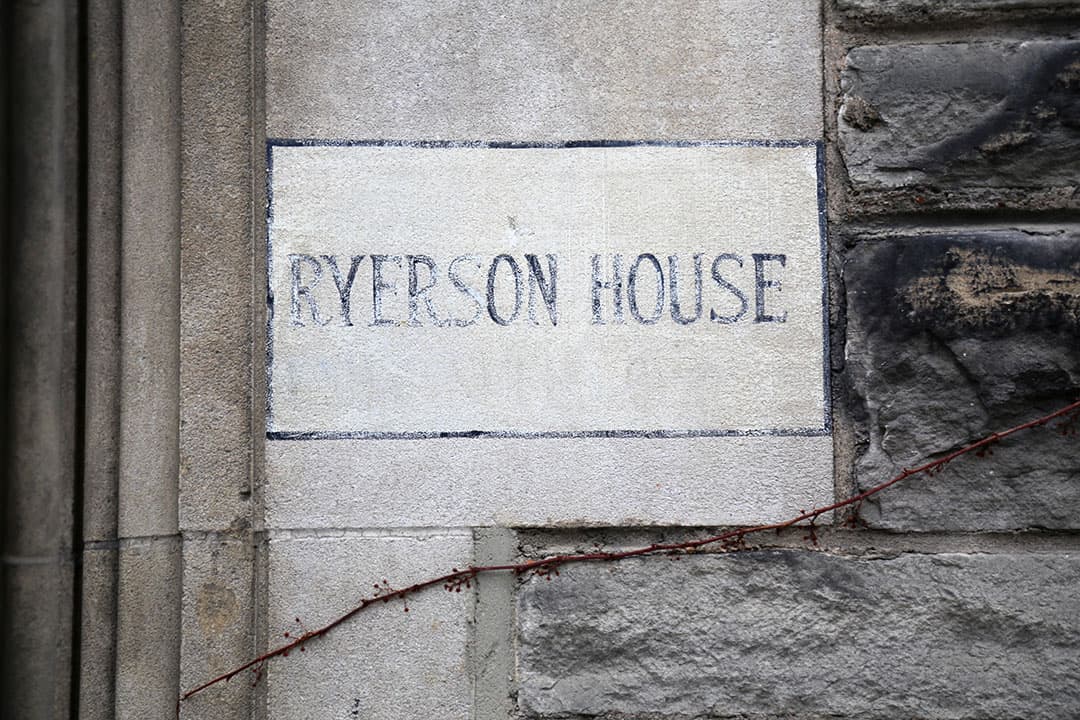On February 4, the Victoria University Students’ Administrative Council (VUSAC) released a proposal to rename the Ryerson Vic One course stream and Ryerson House residence building. The VUSAC proposal echoes Ryerson University’s Indigenous Students’ Association and the Ryerson Students’ Union’s petition to rename Ryerson University in 2017.
These facilities are all named after Egerton Ryerson, who is known for being a proponent of the education system in Canada. However, he also believed in separate, religious education for Indigenous children and became a key figure in the design and implementation of residential schools.
Residential schools subjected generations of Indigenous peoples to cultural genocide, abuse, and trauma at the hands of the Canadian government and churches. Given Ryerson’s complicity, students and the Victoria University administration should therefore support the renaming proposal in the context of Canada’s commitment to truth and reconciliation.
This question of whether historical figures who have contributed to violence against Indigenous peoples should still be honoured by the streets, buildings, and institutions that bear their names is a hotly contested one. The debate has gained more traction since the celebration of Canada’s 150th birthday in 2017.
For instance, a motion to discuss changing the names of public schools and buildings named after John A. Macdonald passed at a meeting of the Elementary Teachers’ Federation of Ontario (ETFO). The motion cites the name as a contributing factor to an unsafe learning environment for children, as Macdonald contributed to the forced starvation and assimilation of Indigenous peoples, with the goal of “tak[ing] the Indian out of the child.”
Some argue that the push to rename buildings shows a lack of understanding for historical context, maintaining that important figures in Canadian history should not be held to today’s moral standards. But as Indigenous writer Chelsea Vowel points out, to view the mistreatment of Indigenous peoples through a historical lens is really to view it through “a whites-only 19th century perspective.” Indigenous peoples in both the past and the present morally opposed the actions of figures like Macdonald.
In a similar debate concerning renaming schools and parks named for Frank Oliver — a nineteenth century politician known for anti-Indigenous and anti-Black racism — Edmonton Journal columnist Paula Simons argues that, if only perfect people are memorialized, “we soon won’t have anyone to remember at all.”
This concern is misplaced. The movement to remove Oliver, Macdonald, and Ryerson’s names isn’t related to whether they were perfect people in their lives, but rather how their words and actions continue to shape Canada today. The decision to remove a racist historical figure’s name from a building isn’t a process of completing a comprehensive evaluation of that person’s character, argues Regina Rini, an assistant professor of ethics at New York University. Rather, it is a process of asking whether the values that person represents are worth passing on to future generations.
Simons further voices the concern that renaming monuments and buildings is an attempt to erase a colonial past, rather than acknowledge it. However, while we should remember Ryerson’s part in laying the foundation for residential schools, there are still ways to acknowledge his role without having a building or course named after him. For example, organizations on campus like the U of T Indigenous Studies Students’ Union host events for Orange Shirt Day every year as a commitment to remembering the violence of residential schools.
It is paramount that we recognize that Canada was built on, and continues to perpetrate, anti-Indigenous violence. However, buildings are named for those we respect, admire, and hope to be inspired by — not simply people we wish to remember for good or for bad. Keeping Ryerson’s name on U of T buildings and courses not only ensures that he is remembered, but also that he is respected.
It is important that we stop honouring anti-Indigenous figures in this way. But it is only a first step — the easy work, as some historians have described. In response to the ETFO motion concerning schools named after Macdonald, Indigenous entrepreneur Robert Jago wrote in The Globe and Mail that “reconciliation is not about earnest and well-meaning non-natives beating the drum for the one and only Indigenous issue that’s made it through to their political consciousness.”
Students should support VUSAC’s proposal, but we should be wary of focusing solely on this issue. Reconciliation requires, and deserves, hard work as well. Non-Indigenous students, like me, should also support funding for more Indigenous spaces on campus, hiring more Indigenous professors, pushing for Indigenous teaching to be offered in more disciplines, and most importantly, listening to Indigenous students, staff, and faculty.
Renaming buildings does not absolve Canada’s collective guilt, nor should it be supported as a way to make us more comfortable with our history. Instead, we should reflect carefully on the historical figures who we choose to revere and on the impact of their legacies. We can’t erase history, and we shouldn’t attempt to, but we can hope for positive change in the present.
Amelia Eaton is a second-year Political Science and Ethics, Society and Law student at Woodsworth College. She is The Varsity’s Student Life Columnist.



